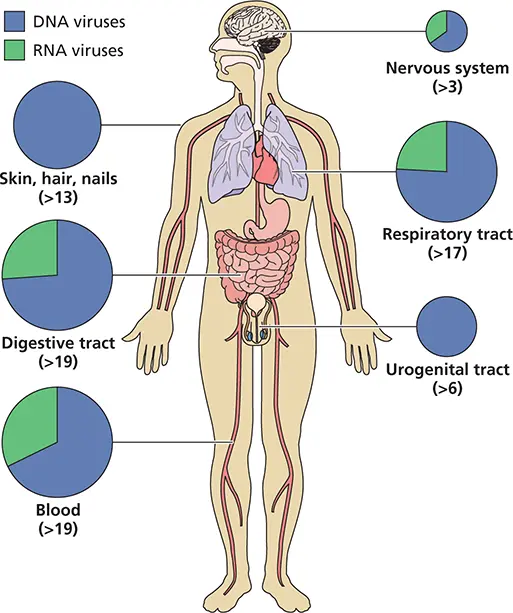Jane Flint - Principles of Virology, Volume 1
Здесь есть возможность читать онлайн «Jane Flint - Principles of Virology, Volume 1» — ознакомительный отрывок электронной книги совершенно бесплатно, а после прочтения отрывка купить полную версию. В некоторых случаях можно слушать аудио, скачать через торрент в формате fb2 и присутствует краткое содержание. Жанр: unrecognised, на английском языке. Описание произведения, (предисловие) а так же отзывы посетителей доступны на портале библиотеки ЛибКат.
- Название:Principles of Virology, Volume 1
- Автор:
- Жанр:
- Год:неизвестен
- ISBN:нет данных
- Рейтинг книги:5 / 5. Голосов: 1
-
Избранное:Добавить в избранное
- Отзывы:
-
Ваша оценка:
- 100
- 1
- 2
- 3
- 4
- 5
Principles of Virology, Volume 1: краткое содержание, описание и аннотация
Предлагаем к чтению аннотацию, описание, краткое содержание или предисловие (зависит от того, что написал сам автор книги «Principles of Virology, Volume 1»). Если вы не нашли необходимую информацию о книге — напишите в комментариях, мы постараемся отыскать её.
Volume I: Molecular Biology
Volume II: Pathogenesis and Control
Principles of Virology, Fifth Edition
Principles of Virology, Volume 1 — читать онлайн ознакомительный отрывок
Ниже представлен текст книги, разбитый по страницам. Система сохранения места последней прочитанной страницы, позволяет с удобством читать онлайн бесплатно книгу «Principles of Virology, Volume 1», без необходимости каждый раз заново искать на чём Вы остановились. Поставьте закладку, и сможете в любой момент перейти на страницу, на которой закончили чтение.
Интервал:
Закладка:
Viruses have been part of all of human history: they were present long before Homo sapiens evolved, and the majority of human infections were likely acquired from other animals (zoonoses).
While Koch’s postulates were essential for defining many agents of disease, not all pathogenic viruses can be shown to fulfill these criteria.
Viruses can be described based on their appearance, the hosts they infect, or the nature of their nucleic acid genome.
All viruses must produce mRNA that can be translated by cellular ribosomes. The Baltimore classification allows relationships among viruses with RNA or DNA genomes to be determined based on the pathway required for mRNA production.
A common program underlies the propagation of all viruses. This textbook describes that strategy and the similarities and differences in the manner in which different viruses are reproduced, spread, and cause disease.
Viruses Infect All Living Things
While most of this textbook focuses on viral infections of humans, it is important to bear in mind that viruses also infect pets, domestic and wild animals, plants, and insects throughout the world. They infect microbes such as algae, fungi, and bacteria, and some even interfere with the reproduction of other viruses. Viral infection of agricultural plants and animals can have enormous economic and societal impact. Outbreaks of infection by foot-and-mouth disease and avian influenza viruses have led to the destruction ( culling) of millions of cattle, sheep, and poultry, including healthy animals, to prevent further spread. Losses in the United Kingdom during the 2001 outbreak of foot-and-mouth disease ran into billions of dollars, and caused havoc for both farmers and the government ( Box 1.2). More recent outbreaks of the avian influenza virus H5N1 and other strains in Asia have resulted in similar disruption and economic loss. Viruses that infect crops such as potatoes and fruit trees are common, and can lead to serious food shortages as well as financial devastation.
BOX 1.1
BACKGROUND
Some astounding numbers
Viruses are the most abundant entities in the biosphere. The biomass on our planet of bacterial viruses alone exceeds that of all of Earth’s elephants by more than 1,000-fold. There are more than 1030 particles of bacterial viruses in the world’s oceans, enough to extend out into space for 200 million light-years if arranged head to tail ( http://www.virology.ws/2009/03/20/the-abundant-and-diverse-viruses-of-the-seas/; http://www.phagehunter.org/2008/09/how-far-do-those-phages-stretch.html).
Whales are commonly infected with a member of the virus family Caliciviridae that causes rashes, blisters, intestinal problems, and diarrhea, and that can also infect humans. Infected whales excrete more than 1013 calicivirus particles daily.
The average human body contains approximately 1013 cells, but almost an equal number of bacteria, and as many as 100-fold more virus particles.
With about 1016 human immunodeficiency virus type 1 (HIV-1) genomes on the planet today, it is highly probable that somewhere there exist HIV-1 genomes that are resistant to every one of the antiviral drugs that we have now or are likely to have in the future.

Viruses reside in Earth’s vast oceans and everywhere else on our planet.Courtesy of NASA’s Earth Observatory, Suomi NPP satellite image courtesy of NASA/GSFC.

Figure 1.1 The human virome. Our knowledge of the diversity of viruses that can be present in or on a normal human (including some potential pathogens) has increased greatly with the development of high-throughput sequencing techniques and new bioinformatic tools. Current estimates of the numbers of distinct viral families with DNA or RNA genomes in various sites are in parentheses; the > symbol signifies the presence of additional viruses not yet assigned to known families. The numbers may increase as diagnostic tools improve and new viral families are identified. Data from Popgeorgiev N et al. 2013. Intervirology 56:395-412; see also http://www.virology.ws/2017/03/23/the-viruses-in-your-blood/.
BOX 1.2
DISCUSSION
The first animal virus discovered remains a scourge today
Foot-and-mouth disease virus infects domestic cattle, pigs, and sheep, as well as many species of wild animals. Although mortality is low, morbidity (illness) is high and infected farm animals lose their commercial value. The virus is highly contagious, and the most common and effective method of control is by the slaughter of entire herds in affected areas.
Outbreaks of foot-and-mouth disease were widely reported in Europe, Asia, Africa, and South and North America in the 1800s. The largest epidemic ever recorded in the United States occurred in 1914. After entry into the Chicago stockyards, the virus spread to more than 3,500 herds in 22 states. This calamity accelerated epidemiological and disease control programs, eventually leading to the field- and laboratory-based systems maintained by the U.S. Department of Agriculture to protect domestic livestock from foreign animal and plant diseases. Similar control systems have been established in other Western countries, but this virus still presents a formidable challenge throughout the world. A 1997 outbreak of foot-and-mouth disease among pigs in Taiwan resulted in economic losses of greater than $10 billion.
In 2001, an epidemic outbreak in the United Kingdom spread to other countries in Europe and led to the slaughter of more than 6 million infected and uninfected farm animals. The associated economic, societal, and political costs jolted the British government. Images of mass graves and horrific pyres consuming the corpses of dead animals (see figure) sensitized the public as never before. Minor outbreaks that occurred later in the United Kingdom and parts of Asia were also controlled by culling. But in 2011, South Korea was reported to have destroyed 1.5 million pigs, roughly 12% of its population, to curb a more serious outbreak spread of the virus.
Hunt J.3 January 2013. Foot-and-mouth is knocking on Europe’s door. Farmers Weekly. https://www.fwi.co.uk/livestock/health-welfare/livestock-diseases/livestock-foot-mouth/foot-and-mouth-is-knocking-on-europe-s-door.
Murphy FA, Gibbs EPJ, Horzinek MC, Studdert MJ. 1999. Veterinary Virology, 3rd ed. Academic Press, Inc, San Diego, CA.

Mass burning of cattle carcasses during the 2001 foot-and-mouth disease outbreak in the United Kingdom.Courtesy of Dr. Pamela Hullinger, California Department of Food and Agriculture.
Viruses Can Cause Human Disease
With such constant exposure, it is nothing short of amazing that the vast majority of viruses that infect us have little or no impact on our health or well-being. As described in Volume II, we owe such relative safety to our elaborate immune defense systems, which have evolved under the selective pressure imposed by microbial infection. When these defenses are compromised, even the most common infection can be lethal. Despite such defenses, some of the most devastating human diseases have been or still are caused by viruses; these diseases include smallpox, yellow fever, poliomyelitis, influenza, measles, and AIDS. Viral infections can lead to life-threatening diseases that impact virtually all organs, including the lungs, liver, central nervous system, and intestines. Viruses are responsible for approximately 15% of the human cancer burden, and viral infections of the respiratory and gastrointestinal tracts kill millions of children in the developing world each year. As summarized in Volume II, Appendix, there is no question about the biomedical importance of these agents.
Читать дальшеИнтервал:
Закладка:
Похожие книги на «Principles of Virology, Volume 1»
Представляем Вашему вниманию похожие книги на «Principles of Virology, Volume 1» списком для выбора. Мы отобрали схожую по названию и смыслу литературу в надежде предоставить читателям больше вариантов отыскать новые, интересные, ещё непрочитанные произведения.
Обсуждение, отзывы о книге «Principles of Virology, Volume 1» и просто собственные мнения читателей. Оставьте ваши комментарии, напишите, что Вы думаете о произведении, его смысле или главных героях. Укажите что конкретно понравилось, а что нет, и почему Вы так считаете.



